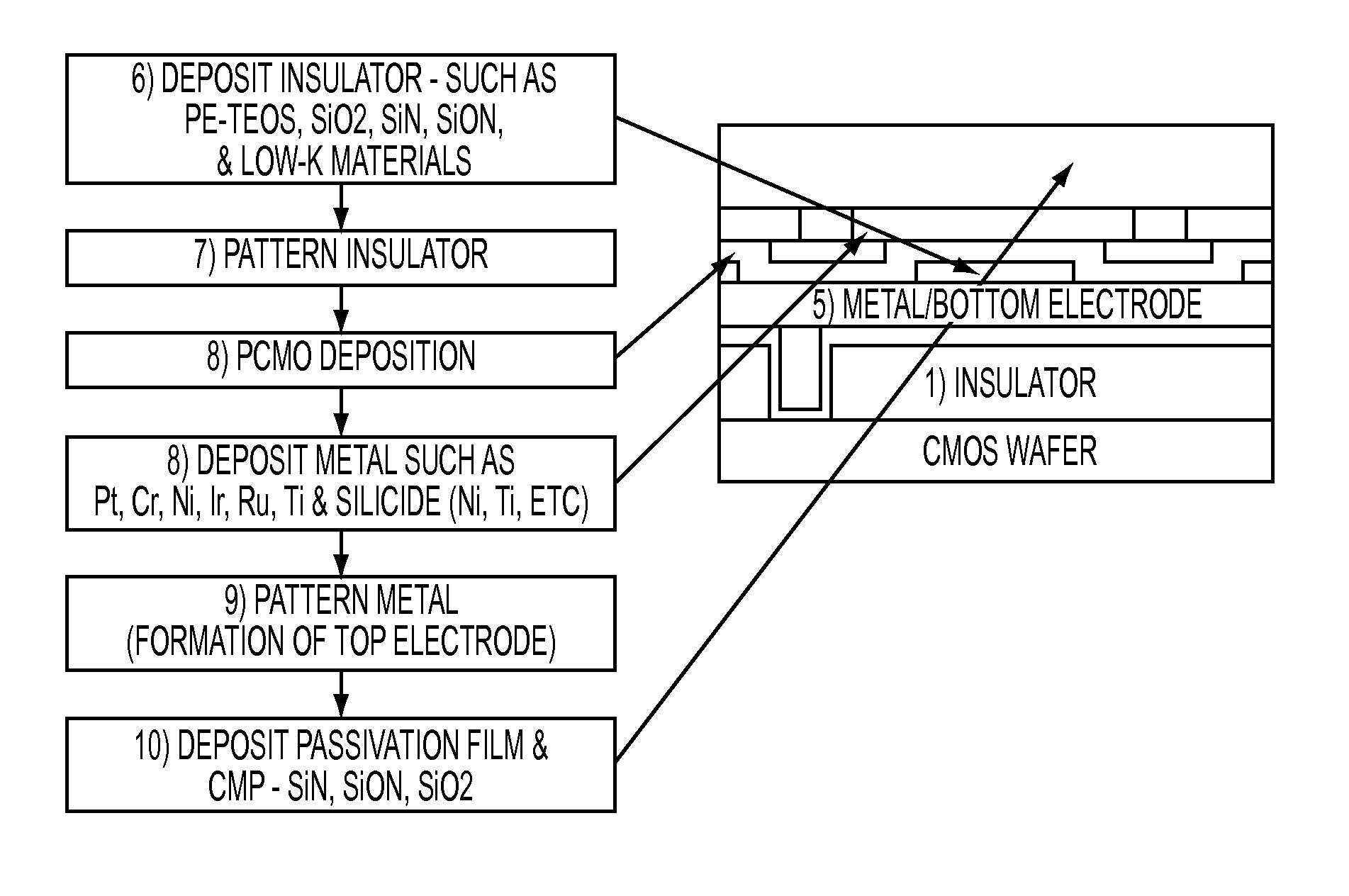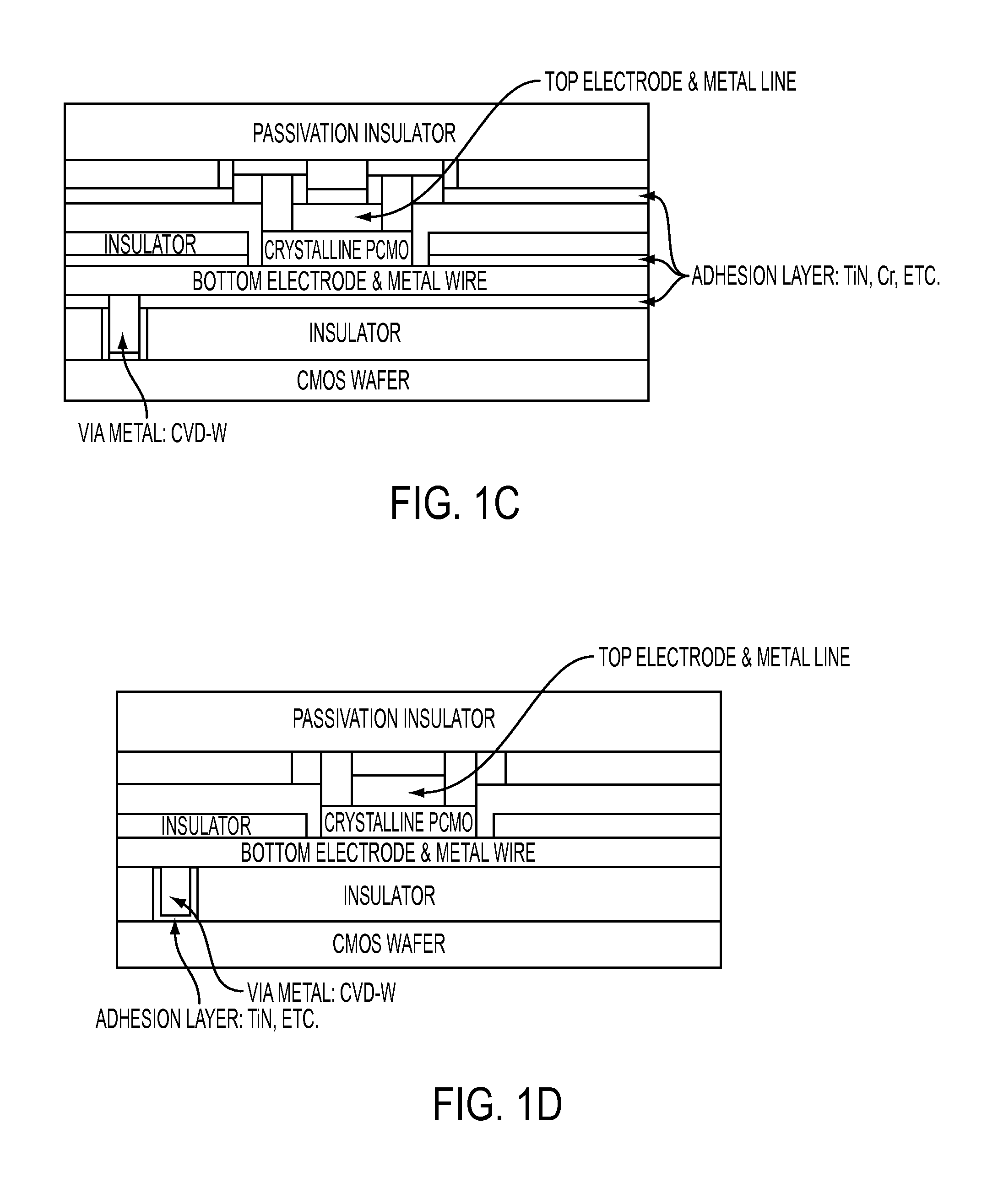Systems and methods for fabricating self-aligned memory cell
a self-aligning and memory cell technology, applied in the direction of basic electric elements, electrical equipment, semiconductor devices, etc., can solve the problems of volatile drams and power requirements, and achieve the effects of low cost, high density storage, and low cos
- Summary
- Abstract
- Description
- Claims
- Application Information
AI Technical Summary
Benefits of technology
Problems solved by technology
Method used
Image
Examples
Embodiment Construction
[0024]Referring now to the drawings in greater detail, there is illustrated therein structure diagrams for a semiconductor processing system and logic flow diagrams for processes a system will utilize to deposit a memory device, as will be more readily understood from a study of the diagrams.
[0025]FIGS. 1A-1B show an exemplary process to fabricate a self-aligned memory cell. The process uses CMOS wafers and conventional CMOS circuits or structures may be formed on the wafer prior to the memory cell fabrication. One or more electronic devices can be formed on the wafer. The process forms non-volatile memory such as RRAM. Unlike conventional DRAM, which uses electrical cells (e.g., capacitors) to store data, RRAM uses resistance cells. Because resistance memory cells maintain their state even when power is removed, RRAM possesses a distinct advantage over electrical cells.
[0026]Turning now to FIG. 1A, the process deposits an insulator such as silicon dioxide, silicon nitride, silicon ...
PUM
| Property | Measurement | Unit |
|---|---|---|
| junction resistance | aaaaa | aaaaa |
| junction resistance | aaaaa | aaaaa |
| resistance | aaaaa | aaaaa |
Abstract
Description
Claims
Application Information
 Login to View More
Login to View More - R&D
- Intellectual Property
- Life Sciences
- Materials
- Tech Scout
- Unparalleled Data Quality
- Higher Quality Content
- 60% Fewer Hallucinations
Browse by: Latest US Patents, China's latest patents, Technical Efficacy Thesaurus, Application Domain, Technology Topic, Popular Technical Reports.
© 2025 PatSnap. All rights reserved.Legal|Privacy policy|Modern Slavery Act Transparency Statement|Sitemap|About US| Contact US: help@patsnap.com



